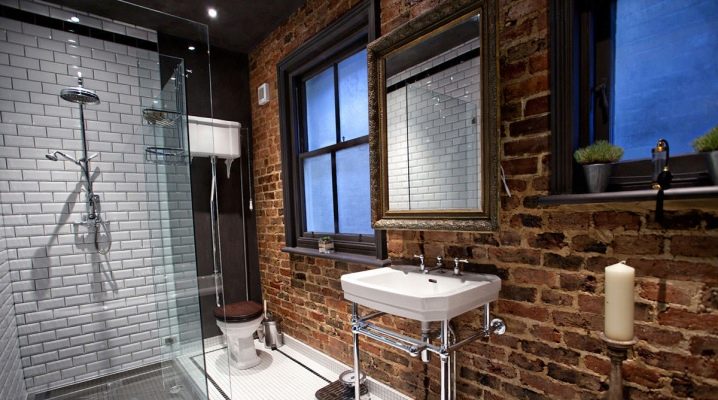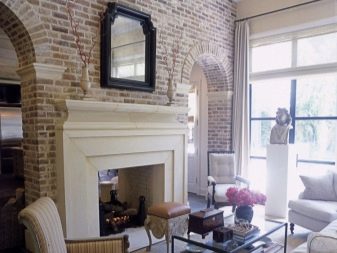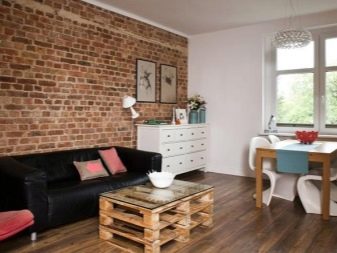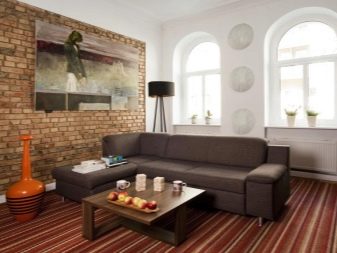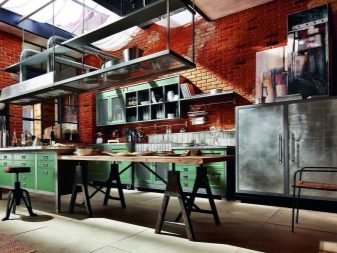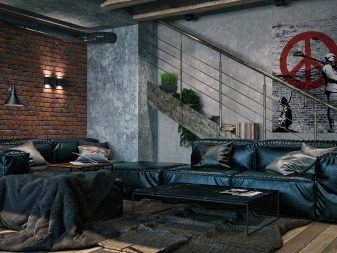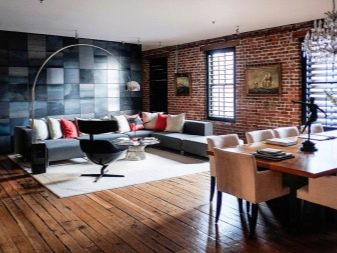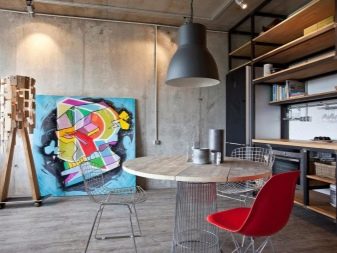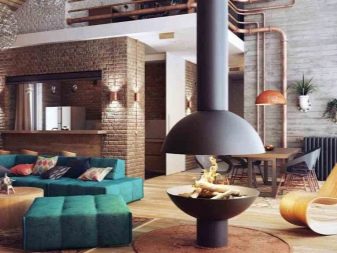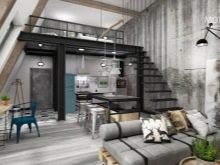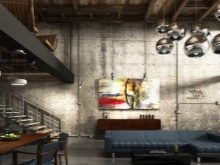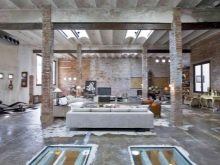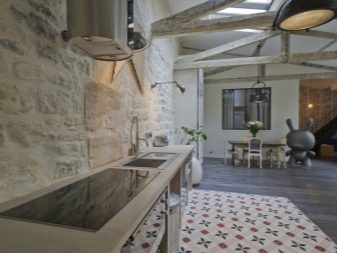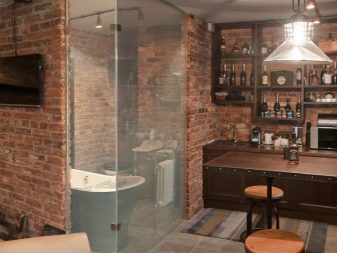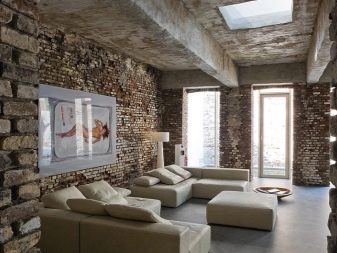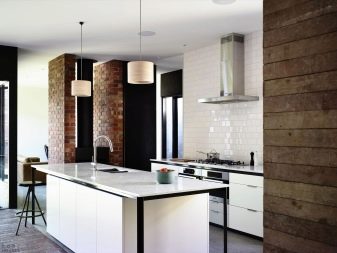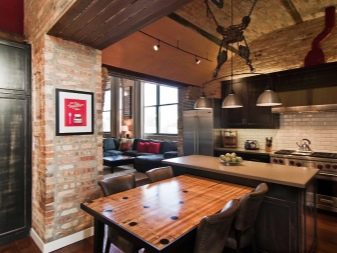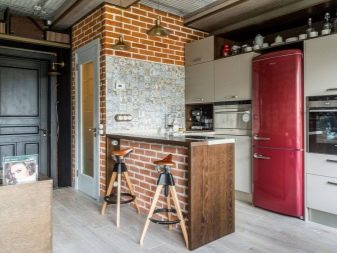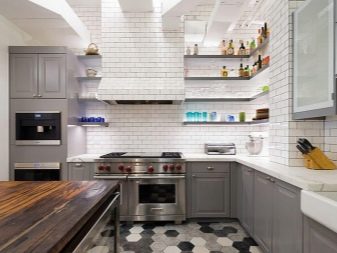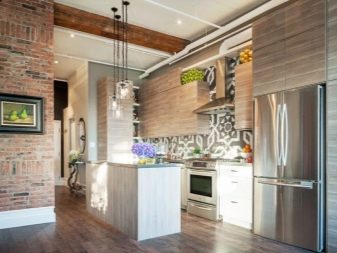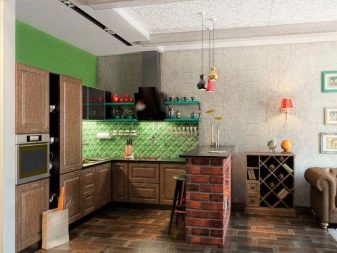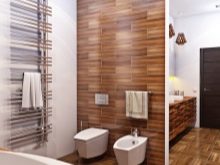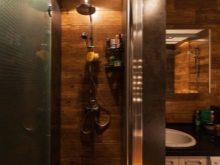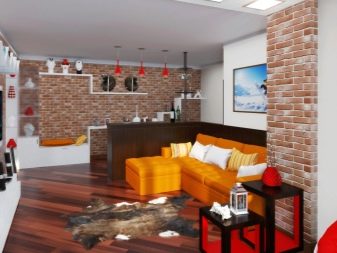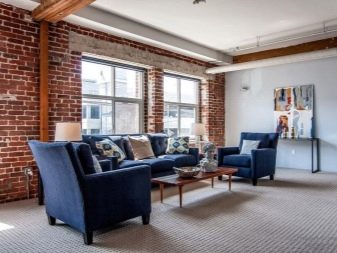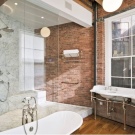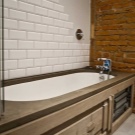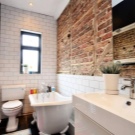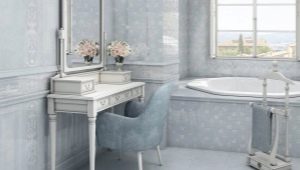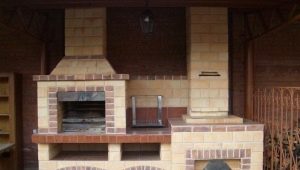Loft Tile: Modern Interior Design
Loft style never ceases to gain popularity both abroad and among domestic designers and users. It attracts with simplicity of details, interesting decor, accessible materials and versatility, since there are no restrictions for its use. Loft is suitable for any room, regardless of the size of the room, which makes this style direction the most relevant and simple in the design world.
Special features
Loft can not be called an interior that will suit every person, because some will lack the comfort, warmth and completeness in the design.
Textured surfaces - this is one of the main components of the style, which must certainly be present in the interior design. Brickwork, outdated plaster, irregularities on the surface of the walls and imitation of industrial and natural materials - this is only a small part of the textures that can be involved in the design of the room in the loft style.
A special place in the design of such a plan is the choice of tiles.The process of selecting materials can not be called easy, because each texture in its own way complements the interior and can decorate the room or show all its flaws.
Types of materials
The main types of raw materials used to create a loft style are as follows:
- Industrial Invoices - This is a classic for this style, because the loft got its start from the design of abandoned and unwanted premises: warehouses, factories and large factories. Initially, they were converted into office buildings and various workshops, and after that they began to be used as residential premises. New types of tiles are constantly appearing on the building materials market, which completely imitates industrial materials and allows you to create unique designs for all kinds of premises.
It is almost impossible to distinguish authentic texture from high-quality imitation with the naked eye. This is only for professionals of the highest level. At the same time, the cost of such materials is much lower, and ease of use makes it possible to make installation in any part of the room without undue difficulty.
- The symbolic texture for the loft style is brick wallserving different colors. The most relevant color palette is the typical red color for bricks, but it is quite successfully replaced by white, gray, beige, brown and black, depending on the requirements of the project. The laying looks beautiful and stylish, but it will be very difficult to care for such a surface, because it often accumulates dust and dirt, especially if a tile of light shades is chosen. It can be removed only with a dry cloth or a special brush, but this is a rather complicated and time-consuming process. In addition, only an experienced specialist who has done such work and is familiar with the installation features will be able to lay the material.
- Metal surfaces actively used in the design of the room in the style of loft, but they must be used in small quantities. It can be gold, silver, brass, copper and bronze. The basis of the material is porcelain, but it is in no way inferior in appearance to real metal surfaces. The use of metals is important in technical rooms where you need to add a little bit of brutal and hard design to the interior.
- Concrete is an excellent material that acts as a backdrop for future design. Tile, imitating a concrete surface, not only repeats all the external manifestations of this material, but also surpasses it in terms of ease of use. Designers advise to use concrete tiles for floor decoration.
- Tile stylized plaster, is one of the most popular types of finishing for a loft style. It can act as a bright accent, and to create a neutral zone that will not distract attention to itself.
Natural materials have long earned the love of designers in the design of rooms in various styles. It is beautiful, practical and eco-friendly, but high-quality wood, natural stone or leather are very expensive, so tile comes to the rescue, which completely repeats the appearance of natural textures and has a lower cost. The following options are most popular:
- Wooden surfaces stand on a level with brickwork, if we talk about the main components of the style. They fully fit into the interior, adding light and heat, slightly compensating for the lack of comfort and smoothing out the clear and tight boundaries.The tile, unlike a natural tree, can be applied not only in premises, but also rooms with high humidity. It completely repeats the finish of a tree with various cracks, characteristic attritions and a special pattern.
- No less relevant use imitation of natural stone. Quartzite and sandstone are easily combined with other materials of both industrial and natural character.
Features of using tiles
Interior wall tiles are used for ubiquitous decoration of walls and floors in the interior, while allowing you to create a multi-faceted and unusual design. At the same time, it is not necessary to use only one type of tile, since different variants harmoniously combine with each other in terms of colors, textures and shapes. For different rooms and functional areas choose a particular laying of the material.
Kitchen space requires a special approach to the selection of coverage. The tile is ideal for finishing walls and floors in the kitchen, combining practicality of use and an attractive appearance. For walls use tiles with imitation bricks of different colors, plaster or natural stone.Concrete or metal coating is more suitable for facing the floor surface.
With the help of such a tile, it is possible to almost imperceptibly separate the dining and work areas. The work surface looks good with brick or masonry, which is often supplemented with metal decorative elements and fittings. In the dining area, the use of wood is important, because this material gives completeness to the image and allows you to create a cozy atmosphere. Separate sections of the walls are painted with paint and act as a neutral element. The bar between the two zones is the bar or kitchen island, which is also applicable in the loft style.
For the design of an apron, designers often use multi-colored tiles, which in a single canvas looks like a quilt. The use of catchy and bright elements creates a certain accent that attracts all the attention and decorates the room.
Graphite tiles are suitable for floors.which repeats the appearance of asphalt and is a fairly practical material. It gives a special chic to the interior only in the case when it has brutal features.
The warmth and comfort will give a tile under the tree, which visually softens the rough by nature of the interior. It represents light or dark wood, which has the characteristic features of an aged material. It is possible to use tiles with imitation of old parquet, but this option is not suitable for all projects.
For the living room it is quite acceptable to use tiles not only as a floor covering, but also for wall decoration. Designers are advised to approach this option facing with extreme caution. Although the loft involves the use of a large number of coarse materials, in the living room ceramic tiles can act only as a decorative element that highlights a certain area and makes a variety.
You should not completely tile the living room walls with tiles, as this will look heavy, dark and monotonous. In terms of flooring there are no restrictions, but the benefits, as in other rooms, are given to stone and wood.
Bathroom involves the use of tiles only, but not of the same type, but in combination with various textures and shapes. The mosaic is relevant both for finishing the entire surface of the walls, and as a bright element.The color palette for rooms with good natural lighting is mostly cold, for example, blue is actively used. In other cases, the interior is complemented by decorative elements of warm colors. The collection must be chosen very carefully.
Most of the room is one or two colors that go well together. Color diversity is permissible to create an accent, for example, in the area of the shower stall. In the loft style, it is made of solid glass, which is supported by metal elements.
Tiled tiles in loft style - is the most convenient and acceptable way to translate the desired design in any room.
How to make a tile with your own hands in the style of "loft", see the next video.
